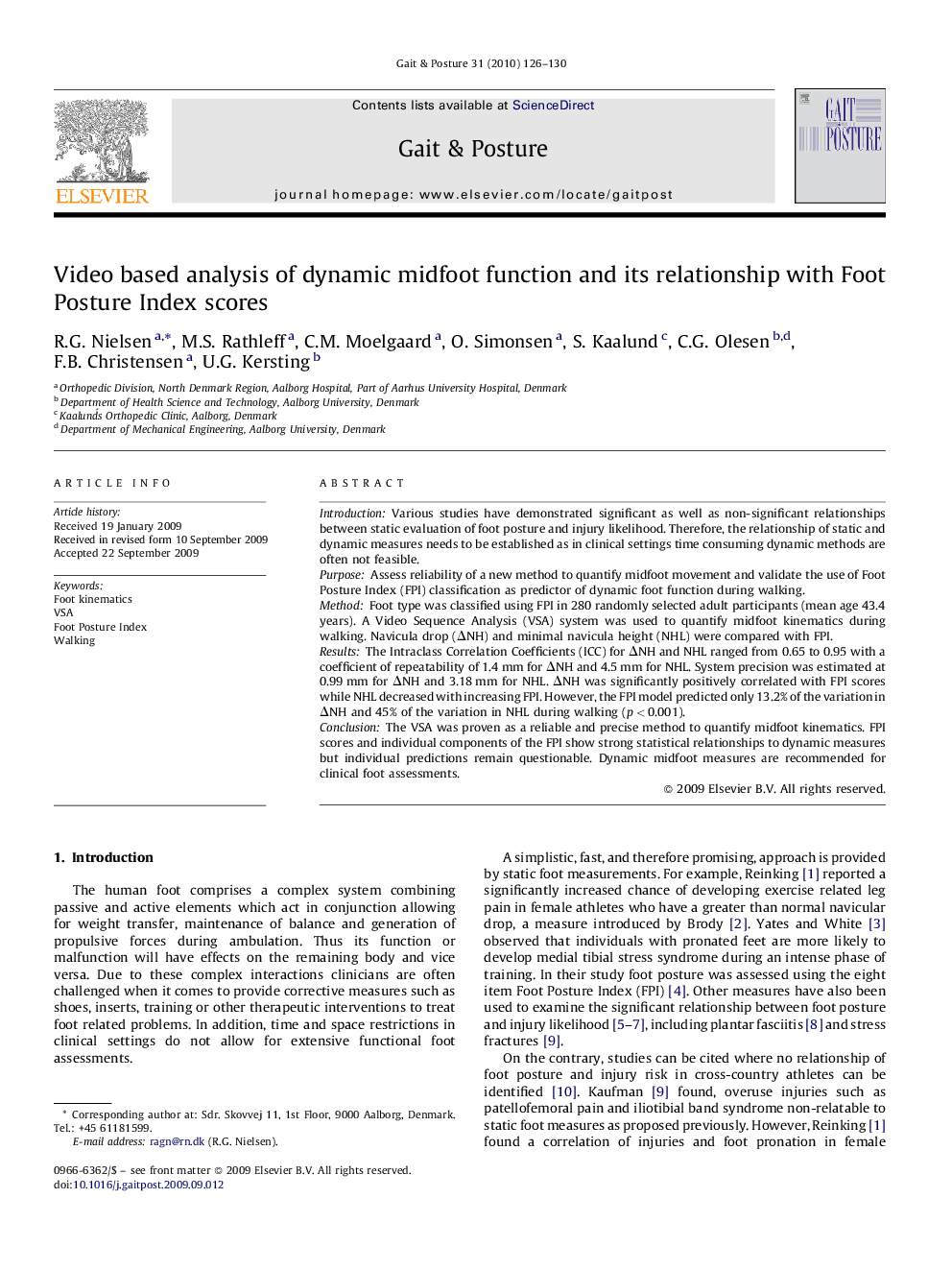| Article ID | Journal | Published Year | Pages | File Type |
|---|---|---|---|---|
| 4057213 | Gait & Posture | 2010 | 5 Pages |
IntroductionVarious studies have demonstrated significant as well as non-significant relationships between static evaluation of foot posture and injury likelihood. Therefore, the relationship of static and dynamic measures needs to be established as in clinical settings time consuming dynamic methods are often not feasible.PurposeAssess reliability of a new method to quantify midfoot movement and validate the use of Foot Posture Index (FPI) classification as predictor of dynamic foot function during walking.MethodFoot type was classified using FPI in 280 randomly selected adult participants (mean age 43.4 years). A Video Sequence Analysis (VSA) system was used to quantify midfoot kinematics during walking. Navicula drop (ΔNH) and minimal navicula height (NHL) were compared with FPI.ResultsThe Intraclass Correlation Coefficients (ICC) for ΔNH and NHL ranged from 0.65 to 0.95 with a coefficient of repeatability of 1.4 mm for ΔNH and 4.5 mm for NHL. System precision was estimated at 0.99 mm for ΔNH and 3.18 mm for NHL. ΔNH was significantly positively correlated with FPI scores while NHL decreased with increasing FPI. However, the FPI model predicted only 13.2% of the variation in ΔNH and 45% of the variation in NHL during walking (p < 0.001).ConclusionThe VSA was proven as a reliable and precise method to quantify midfoot kinematics. FPI scores and individual components of the FPI show strong statistical relationships to dynamic measures but individual predictions remain questionable. Dynamic midfoot measures are recommended for clinical foot assessments.
